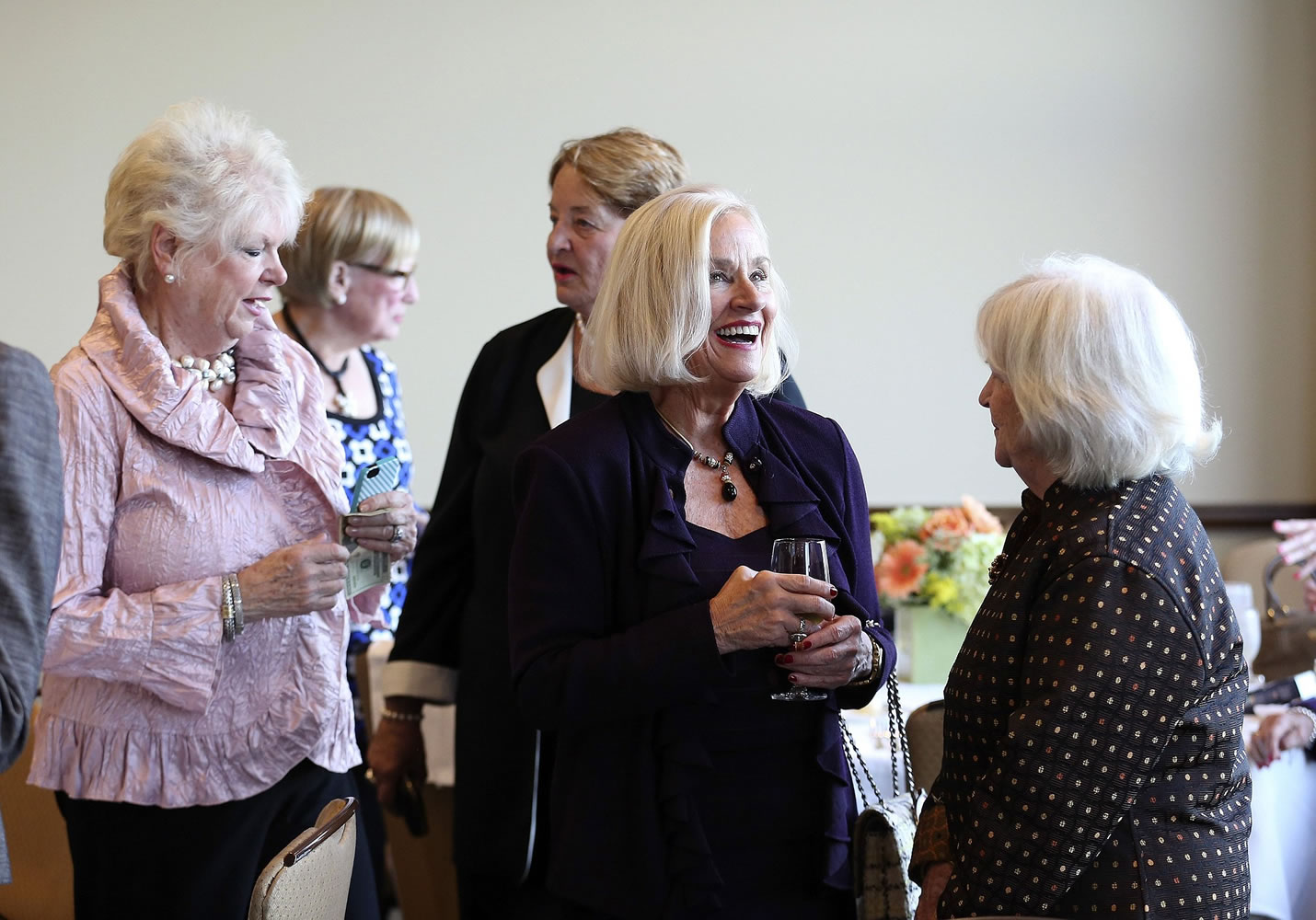LAKE FOREST, Ill. — The ruins of Barat College in Lake Forest were hushed one day recently, save for the distant whine of a lawn mower and the brittle tapping sound of men stacking bricks by hand.
Built in 1904, the historic building known as Old Main is now reduced to piles of rubble and twisted metal. A cupola that had crowned the building is set off to the side of the construction site, its white paint peeling in the sun.
Barat College, once a proud all-girls Catholic college run by the nuns of the Society of the Sacred Heart, was closed in 2005 after years of decline. Demolition began last fall. But that didn’t prevent members of the class of 1964 from gathering in Chicago recently for their 50th reunion.
Now in their early 70s, the women who attended Barat recalled a sheltered but rigorous college experience in the turbulent 1960s and an education that has guided them through life’s intervening joys and heartaches. Through them, they say, Barat lives on.
“I think it shows that you can go back home again. And that bricks and mortar do not Barat College make,” said Fran Romweber, a former class president and now a retired educator living in Ohio.
“Because we know Barat is not tangibly there anymore,” Romweber added. “But we were very privileged to have something extraordinary in the education that we received there.”
In the 1960s, Barat was one of seven all-girls colleges in the U.S. operated by the Society of the Sacred Heart, said Sister Carolyn Osiek, a society archivist. All of those colleges have either merged with coed universities or closed, Osiek said, a result of demographic changes and shifts in the educational landscape.
For members of the class of 1964, an idyllic college experience was shattered in November of their senior year. Cathy Gibson-Fay remembered she was walking along a campus path when she heard the news that President John F. Kennedy had been assassinated.
“I was devastated. I was really, really heartbroken,” she said. “I had been so filled with hope.”
In 2009, Romweber retired as principal of St. Ursula Academy, an all-girls Catholic college preparatory school in Ohio, after 36 years in education. She currently serves on the Village Council for North Bend, Ohio.
Like many of her fellow Barat graduates, she credited the college for providing strength and guidance throughout the years.
“There was a constancy. They allowed us to seek the truth,” she said, “that God was always with us and we were never alone in our journey.”
In 2001, Barat College, by then coed, merged with DePaul University. But DePaul officials closed Barat in 2005, citing the onerous cost of renovation and maintenance.
After sitting dormant for years, the property was purchased in 2011 by an anonymous donor of the Woodlands Academy of the Sacred Heart, a girls Catholic high school that is part of the Sacred Heart network.
And on Dec. 12, 2012 — the birthday of St. Madeleine Sophie Barat, the school’s namesake — the property was transferred to Woodlands Academy, which sits just across a ravine from the Barat campus, said Gerald Grossman, head of school for Woodlands Academy.
“Were we the end of the complacent ’50s, or were we the beginning of the vigorous, questioning ’60s?” Lucy Grant Naphin, who organized the reunion, said she had asked her classmates. “Where do we fit in?”
In those days, Barat was rigid with its curfew and rules — chewing gum was allowed only in the boudoir — and focused on the decorum and presentation of the “beautiful, well-educated woman,” Gibson-Fay said.
But befitting the Sacred Heart tradition, the nuns also believed in preparing women to be leaders in the world, a progressive thought at the cusp of the women’s liberation movement.
Mother Margaret Burke, then president of Barat, reinforced that belief, Romweber said. Burke died in 1990 and is buried in a cemetery at Barat that will be preserved.
“I think she foresaw that women were going to be a dynamic force in the world,” Romweber said. “To that end, she really became an advocate for educated women to take their rightful place in a changing world.”



